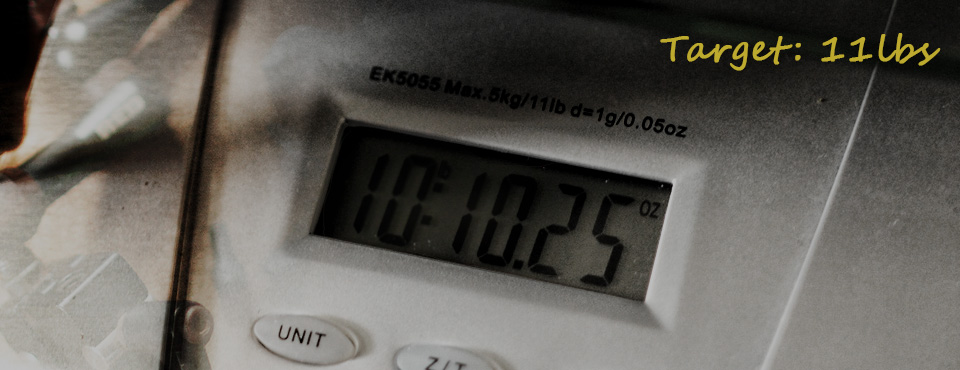I recently found myself in the position where I needed to get my camera rig down to 5kg (11lbs) for a few upcoming shoots. I knew this would be a challenge but turned out to be much more than I expected. Here’s what I found:
Minimum Requirements:
Total camera weight: 11lbs or less (5kg or less)
RED 5″ Camera Monitor (plus cable) – mounted
Wireless Follow Focus – mounted and powered
Wireless Video Transmitter – mounted and powered
SSD card – mounted
One Top Rail for Wireless Follow Focus – mounted
Lens – mounted
Power:
Because my primary camera rig includes the RED Cradle from the RED One days, I knew I could instantly shave some weight by purchasing a direct attaching plate for the camera rig. I did a little bit of research online and chose the Cinema Oxide Brick Back Plate combined with the Wooden Camera V-Mount Battery plate. This would enable me to continue using my RED Brick batteries and get a substantial amount of battery life while still shaving off weight from the rig. In total, that cost about $400. Sadly, when configuring my camera with these modifications to the set-up, my rig clocked in around 12 or 13 lbs without a lens or the wireless follow focus attached. On a functional basis, this new gear very solid and a great way to make the rig very compact and still pack a punch with battery power – but this was clearly not a viable solution for the task at hand.
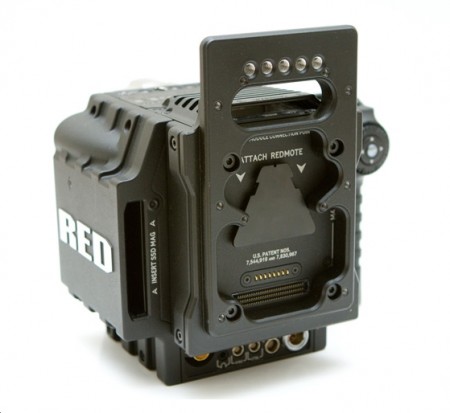
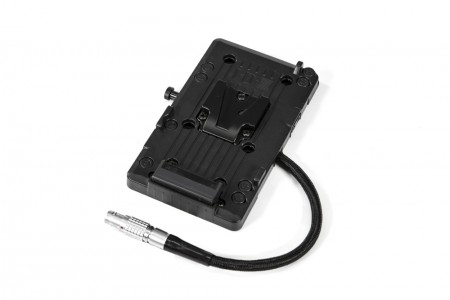
Next up was the RED Side Handle. Luckily, I already owned this component so I could test it instantly. I avoid the Side Handle as a primary option when possible for reason of battery life. The RedVolt batteries often last about 30 minutes or less per small battery. On set, this is highly undesirable for most people. 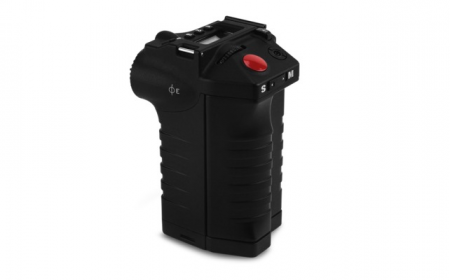 It’s a major trade-off between size and weight vs. available run-time that you can get out of the battery. Anyhow, I removed the above mentioned brick battery plates and installed the side handle to the rig. The weight was reduced below 11lbs but did not yet include a lens or the wireless follow focus system. When factoring in one of my lightest lenses (less than two pounds), the rig clocked in over 12.5 lbs. The RED Side Handle was a bust for this weight requirement.
It’s a major trade-off between size and weight vs. available run-time that you can get out of the battery. Anyhow, I removed the above mentioned brick battery plates and installed the side handle to the rig. The weight was reduced below 11lbs but did not yet include a lens or the wireless follow focus system. When factoring in one of my lightest lenses (less than two pounds), the rig clocked in over 12.5 lbs. The RED Side Handle was a bust for this weight requirement.
*The other issue that would have come into play with the RED Side Handle is that I would have to find a way to power the wireless transmitter and wireless follow focus. I do have a system in place for powering the wireless follow focus without an AUX port from the camera or D-tap – but currently do not have a method to power the wireless follow focus without a D-tap. There a few cabling options for my wireless FF that would allow me to power it via 12v battery but I don’t have that solution in place. Also, the addition of extra batteries to power those components would also add extra weight to the rig – granted, we’re talking about minimal added weight but when you are doing extreme weight reduction, every single ounce counts.
Current plan: Although it needs to be tested under the specific filming circumstances, my working plan is to run power from a battery belt pack that is not directly attached to the camera to remove battery weight completely from the equation of camera rig total weight. This will also still allow me to power the wireless follow focus and wireless video transmitter via the RED Brick battery plate’s D-tap port. The down side to this is that it will make things a little less elegant when it comes to the cables that power everything.
Mounting:
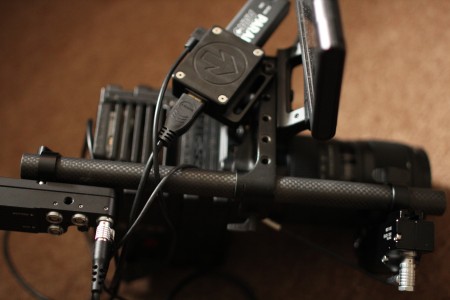 After figuring out the plan for power and testing those options, I needed to move onto mounting the various peripherals (monitor, wireless FF, wireless video transmitter). My top handle was the first thing to go. On a functional level, it simply didn’t need to be attached. Although I prefer to have my monitor mounted to a noga arm, the RED 5″ monitor does have tapped holes for direct mounting. Similarly, there a several mounting options with the wireless video transmitter. The wireless follow focus, however, requires rod support to mount and control the focus. My current solution have a rod block for top rods with 1/4″-20 holes tapped into the top and front surface. With that, I mounted the monitor to the front holes and the video transmitter on the top holes. I then used a single 19mm carbon fiber to mount the wireless follow focus parts (receiver and motor). A second rod wasn’t needed in this configuration.
After figuring out the plan for power and testing those options, I needed to move onto mounting the various peripherals (monitor, wireless FF, wireless video transmitter). My top handle was the first thing to go. On a functional level, it simply didn’t need to be attached. Although I prefer to have my monitor mounted to a noga arm, the RED 5″ monitor does have tapped holes for direct mounting. Similarly, there a several mounting options with the wireless video transmitter. The wireless follow focus, however, requires rod support to mount and control the focus. My current solution have a rod block for top rods with 1/4″-20 holes tapped into the top and front surface. With that, I mounted the monitor to the front holes and the video transmitter on the top holes. I then used a single 19mm carbon fiber to mount the wireless follow focus parts (receiver and motor). A second rod wasn’t needed in this configuration.
Lenses:
With the monitor, video transmitter and wireless follow focus in play, there is very little room left for heavy cine lenses. I can definitely make it work with my Canon mount – Sigma 18-35mm lens + focus gear, as well as the Rokinon Cine 35mm prime lens. It might be possible to squeeze some of the Zeiss CP2 compact primes lenses – but they each weigh in at 2lbs or more per lens, so it will be very tight if you can make it under 11lbs. Overall, you will be probably be very limited with your lens options if you do a similar configuration.
Thoughts and Summary:
This process really got me thinking about all of the people that are working with the Movi rig and RC aerial cinematography and the payload limits. 5kg/11lbs seems to be the current maximum for most of the gimbal stabilization units available. With that in mind, RC aerial cinematography would have slightly more options in regards to the lenses because wireless follow focus could be removed as well as the monitor – provided that is that you able to power the camera from a RC rig mounted battery (rather than camera mounted). If you did power the camera with a camera mounted battery on a RC rig, then the weight savings you would gain from removing the monitor and wireless follow focus would be negated by adding a side handle or large brick battery for the RED system. In the long run, there are more and more 4K cameras coming out every year and I have no doubt that we will see far more lightweight 4k options for these specific circumstances.
At the end of the day, it is a distinct challenge to get a RED rig with the above noted requirements to clock in under 5kg/11lbs and the biggest challenges you will face will be battery power and lens options. After getting this rig finalized, I’m sure I will do a follow up entry with my application in the near future.
MM

